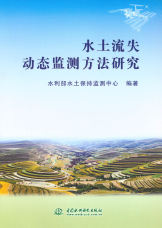
主要责任者: 水利部水土保持监测中心
责任方式: 编著
出版者: 中国水利水电出版社
出版地: 北京
字数: 448 千字
页码: 1-289
开本: 16
中图分类号: S157
语种:中
定价:58.00
出版时间:2011-12
丛书多卷书否:否
书目简介:本册工具书共收录114条词条。
被引频次:17
| 词条 | 水土流失动态监测方法研究 |
| 类别 | 中文百科知识 |
| 释义 |  主要责任者: 水利部水土保持监测中心 责任方式: 编著 出版者: 中国水利水电出版社 出版地: 北京 字数: 448 千字 页码: 1-289 开本: 16 中图分类号: S157 语种:中 定价:58.00 出版时间:2011-12 丛书多卷书否:否 书目简介:本册工具书共收录114条词条。 被引频次:17 |
| 随便看 |
开放百科全书收录579518条英语、德语、日语等多语种百科知识,基本涵盖了大多数领域的百科知识,是一部内容自由、开放的电子版国际百科全书。